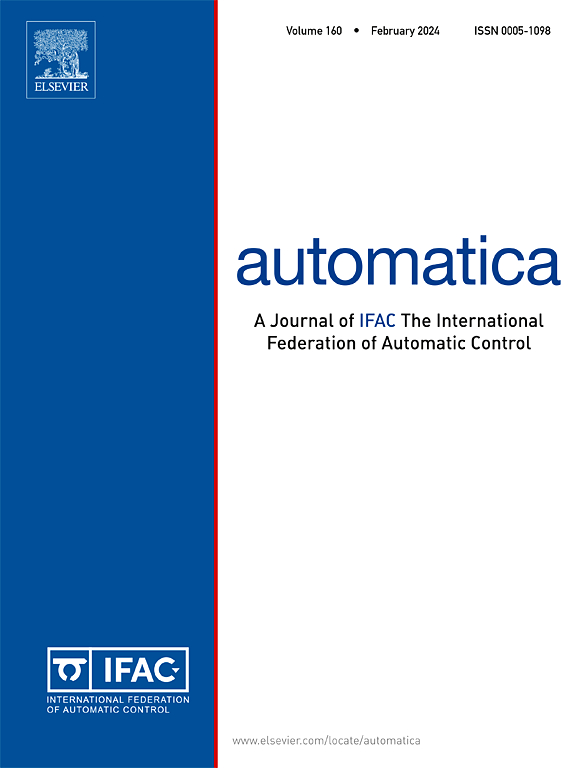On stability of model predictive control with finite-control-set constraints and disturbances
IF 4.8
2区 计算机科学
Q1 AUTOMATION & CONTROL SYSTEMS
引用次数: 0
Abstract
This paper investigates the stability issues of model predictive control (MPC) for discrete-time linear systems with state and finite control set (FCS) constraints subject to time-varying disturbances. A new FCS-MPC design and analysis framework is developed using the disturbance estimation approaches and the tool of robust positive invariant (RPI) set sequence. It encompasses a discrete-time exogenous signal observer that helps characterize the estimated dynamics within well-defined bounds and a quantized control law that adheres to both state and input constraints. The practical asymptotical stability of the resulting closed-loop system is shown to be guaranteed, and the tracking error remains uniformly bounded. Finally, simulation results of a numerical example validate the effectiveness of the proposed method.
论具有有限控制集约束和干扰的模型预测控制的稳定性
本文研究了具有状态和有限控制集(FCS)约束、受时变扰动影响的离散时间线性系统的模型预测控制(MPC)的稳定性问题。本文利用扰动估计方法和鲁棒正不变(RPI)集序列工具,建立了一个新的 FCS-MPC 设计和分析框架。该框架包含一个离散时间外生信号观测器(有助于在定义明确的边界内描述估计动态)和一个量化控制法则(同时遵守状态和输入约束)。结果表明,闭环系统的实际渐近稳定性得到了保证,跟踪误差保持均匀有界。最后,一个数值实例的仿真结果验证了所提方法的有效性。
本文章由计算机程序翻译,如有差异,请以英文原文为准。
求助全文
约1分钟内获得全文
求助全文
来源期刊

Automatica
工程技术-工程:电子与电气
CiteScore
10.70
自引率
7.80%
发文量
617
审稿时长
5 months
期刊介绍:
Automatica is a leading archival publication in the field of systems and control. The field encompasses today a broad set of areas and topics, and is thriving not only within itself but also in terms of its impact on other fields, such as communications, computers, biology, energy and economics. Since its inception in 1963, Automatica has kept abreast with the evolution of the field over the years, and has emerged as a leading publication driving the trends in the field.
After being founded in 1963, Automatica became a journal of the International Federation of Automatic Control (IFAC) in 1969. It features a characteristic blend of theoretical and applied papers of archival, lasting value, reporting cutting edge research results by authors across the globe. It features articles in distinct categories, including regular, brief and survey papers, technical communiqués, correspondence items, as well as reviews on published books of interest to the readership. It occasionally publishes special issues on emerging new topics or established mature topics of interest to a broad audience.
Automatica solicits original high-quality contributions in all the categories listed above, and in all areas of systems and control interpreted in a broad sense and evolving constantly. They may be submitted directly to a subject editor or to the Editor-in-Chief if not sure about the subject area. Editorial procedures in place assure careful, fair, and prompt handling of all submitted articles. Accepted papers appear in the journal in the shortest time feasible given production time constraints.
 求助内容:
求助内容: 应助结果提醒方式:
应助结果提醒方式:


